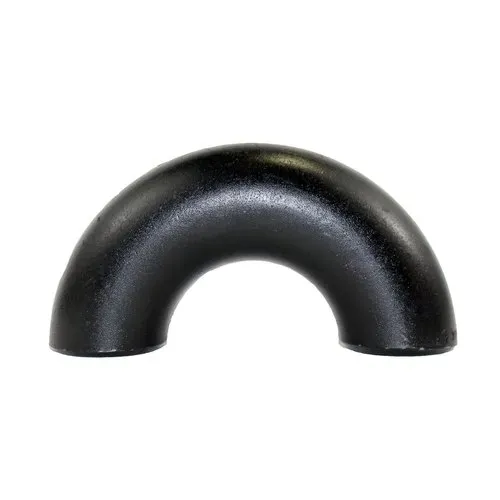-
Cangzhou Yulong Steel Co., Ltd.
-
Phone:
+86 13303177267 -
Email:
admin@ylsteelfittings.com
- English
- Arabic
- Italian
- Spanish
- Portuguese
- German
- kazakh
- Persian
- Greek
- French
- Russian
- Polish
- Thai
- Indonesian
- Vietnamese
- Zulu
- Korean
- Uzbek
- Hindi
- Serbian
- Malay
- Ukrainian
- Gujarati
- Haitian Creole
- hausa
- hawaiian
- Hebrew
- Miao
- Hungarian
- Icelandic
- igbo
- irish
- Japanese
- Javanese
- Kannada
- Khmer
- Rwandese
- Afrikaans
- Albanian
- Amharic
- Armenian
- Azerbaijani
- Basque
- Belarusian
- Bengali
- Bosnian
- Bulgarian
- Catalan
- Cebuano
- China
- China (Taiwan)
- Corsican
- Croatian
- Czech
- Danish
- Esperanto
- Estonian
- Finnish
- Frisian
- Galician
- Georgian
- Kurdish
- Kyrgyz
- Lao
- Latin
- Latvian
- Lithuanian
- Luxembourgish
- Macedonian
- Malgashi
- Malayalam
- Maltese
- Maori
- Marathi
- Mongolian
- Myanmar
- Nepali
- Norwegian
- Norwegian
- Occitan
- Pashto
- Dutch
- Punjabi
- Romanian
- Samoan
- Scottish Gaelic
- Sesotho
- Shona
- Sindhi
- Sinhala
- Slovak
- Slovenian
- Somali
- Sundanese
- Swahili
- Swedish
- Tagalog
- Tajik
- Tamil
- Tatar
- Telugu
- Turkish
- Turkmen
- Urdu
- Uighur
- Welsh
- Bantu
- Yiddish
- Yoruba

Nov . 16, 2024 16:05 Back to list
api 5l welded pipe
API 5L Welded Pipe An Overview of Specifications and Applications
API 5L, or American Petroleum Institute Specification 5L, is a standard that governs the manufacturing of line pipes used in the transportation of oil and gas. This specification outlines the requirements for the manufacture of welded and seamless steel pipes suitable for use in both liquid and gas pipeline applications. Among the varieties produced, welded pipes are particularly significant due to their versatility, cost-effectiveness, and structural integrity.
Understanding API 5L Specification
The API 5L specification includes multiple grades of steel pipe, each characterized by different yield strengths, tensile strengths, and chemical compositions. The most common grades of API 5L pipes include X42, X52, X60, X70, and X80. The X designation indicates the yield strength in thousand psi. For instance, X42 corresponds to a yield strength of 42,000 psi, while X70 indicates a higher yield strength of 70,000 psi.
Welded pipes are produced using a process where flat steel plates or coils are rolled into tubular shapes and welded together, hence the name “welded pipe.” This method allows for larger diameters and thicker walls, making welded pipes suitable for various applications, particularly in pipelines carrying gas, water, and oil under high pressure.
Manufacturing Process
The manufacturing of API 5L welded pipes involves several steps
1. Roll Forming Flat steel sheets or coils are heated and rolled to form a cylindrical shape.
2. Welding The edges of the rolled steel are heated to a molten state and welded together using a variety of techniques such as submerged arc welding (SAW) or electric resistance welding (ERW). Continuous welding helps in achieving a strong bond and reducing the risk of defects.
3. Testing After welding, pipes undergo rigorous testing and inspection to ensure they meet API 5L standards. Common tests include hydrostatic tests, non-destructive testing, and visual inspections to evaluate their strength and integrity.
4. Finishing The final step involves surface treatment, which may include cleaning, coating, or painting to prevent corrosion and enhance durability.
Applications of API 5L Welded Pipe
api 5l welded pipe

One of the primary applications of API 5L welded pipes is in the oil and gas industry. These pipes are utilized in the construction of pipelines that transport crude oil, natural gas, and refined petroleum products across long distances. The strength and resilience of these pipes make them suitable for high-pressure applications, minimizing the risk of leaks and environmental contamination.
Additionally, API 5L welded pipes find applications in various sectors, including
- Water Conveyance With the increasing demand for water supply systems to sustain growing populations and agriculture, welded pipes are used in water transport and distribution networks. - Structural Applications Due to their strength and versatility, API 5L welded pipes are used in structural applications, serving as columns or supports in buildings and infrastructure projects.
- Industrial Uses These pipes are also employed in chemical processing and manufacturing facilities, where they transport various liquids and gases under different pressures and temperatures.
Advantages of API 5L Welded Pipes
The use of API 5L welded pipes presents several advantages
- Cost-Effectiveness Welded pipes are generally less expensive to produce compared to seamless pipes, allowing for more economical pipeline projects.
- Customization The manufacturing process allows for customization in terms of length, diameter, and wall thickness, accommodating varying project specifications.
- Availability Welded pipes are widely available and can be manufactured in large quantities to meet demands for extensive pipeline projects.
- Strength and Durability With proper welding techniques and quality control, welded pipes exhibit excellent mechanical properties, ensuring longevity under extreme conditions.
Conclusion
API 5L welded pipes are a crucial component in the infrastructure of the oil and gas industry, as well as in other sectors requiring sturdy and reliable piping systems. Understanding their specifications, manufacturing processes, and diverse applications can help stakeholders make informed decisions when planning and executing pipeline projects. With advancements in technology and materials, the future of API 5L welded pipes looks promising, contributing to safer and more efficient transportation of vital resources worldwide.
Latest news
-
ANSI 150P SS304 SO FLANGE
NewsFeb.14,2025
-
ASTM A333GR6 STEEL PIPE
NewsJan.20,2025
-
ANSI B16.5 WELDING NECK FLANGE
NewsJan.15,2026
-
ANSI B16.5 SLIP-ON FLANGE
NewsApr.19,2024
-
SABS 1123 FLANGE
NewsJan.15,2025
-
DIN86044 PLATE FLANGE
NewsApr.19,2024
-
DIN2527 BLIND FLANGE
NewsApr.12,2024
-
JIS B2311 Butt-Welding Fittings LR/SR 45°/90° /180°Seamless/Weld
NewsApr.23,2024











